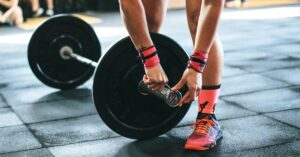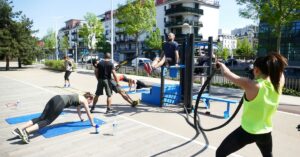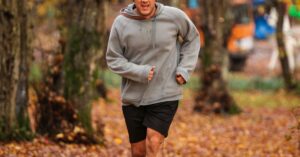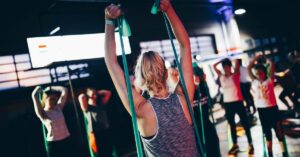Unlock the Hidden Strategies for Boosting Your Recovery and Enhancing Mobility
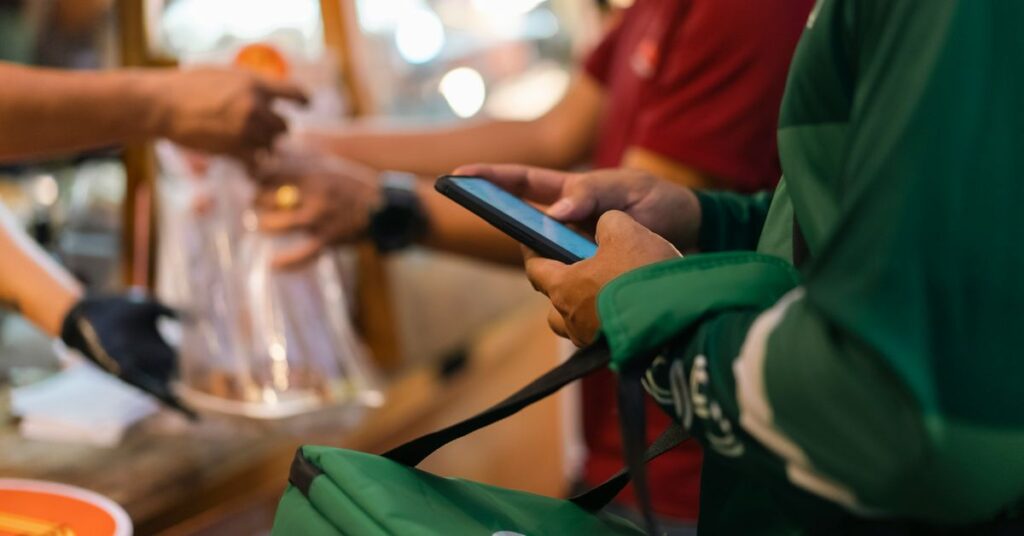
Introduction: The Quest for Recovery and Mobility
Have you ever felt like your body was a rusty old hinge, creaking and groaning with every movement? That’s how I felt after my last marathon, dragging myself around like a zombie. Recovery and mobility seem to be the elusive holy grail for many athletes, hobbyists, and even those of us who enjoy a leisurely stroll. In our fast-paced world, where time is of the essence, the quest for effective recovery strategies is more crucial than ever.
Understanding how to boost recovery and enhance mobility isn’t just for elite athletes; it’s something that can benefit anyone—whether you’re an office worker glued to your chair or a weekend warrior pushing your limits. Let’s dive into the often-overlooked strategies that can help unlock better recovery and mobility, making you feel rejuvenated and ready to conquer your next challenge.
Understanding Recovery: More Than Just Rest
Recovery is often misunderstood. Many think it simply means taking a few days off after a grueling workout. However, recovery encompasses various physical, mental, and emotional aspects. It’s like a well-tended garden—if you don’t nurture it properly, the flowers won’t bloom.
Physical recovery involves muscle repair, replenishing energy stores, and preventing injury. Mental recovery is just as important; after all, a sound mind leads to a healthy body. Studies suggest that mental fatigue can hinder physical performance, so taking time to unwind is part of the game.
The Science Behind Recovery
Several physiological processes kick into gear post-exercise. When you exercise, tiny tears occur in your muscle fibers, and your body begins a repair process that makes your muscles stronger. This is known as muscle hypertrophy. But did you know that your nervous system also needs time to recover? Neural pathways strengthen with practice, and adequate recovery allows those pathways to solidify.
For instance, a study conducted by researchers at the University of California found that participants who engaged in active recovery—like light jogging or stretching—had better outcomes compared to those who were completely sedentary. This suggests that movement promotes blood flow and nutrient delivery, speeding up the recovery process. So, if you’re lounging on the couch, it might be time to reconsider your strategy!
Strategies for Effective Recovery
Now that we’ve laid the groundwork, let’s explore some actionable strategies that can transform your recovery routine.
1. Nutrition: Fueling Your Recovery
Nutrition is the backbone of recovery. Think of it as the oil that keeps your engine running smoothly. Consuming the right nutrients can significantly enhance your recovery process. Here are some key points to consider:
- Protein: Essential for muscle repair. Aim for about 20 to 30 grams post-workout.
- Carbohydrates: Necessary for replenishing glycogen stores. Not all carbs are created equal, though; opt for whole grains, fruits, and vegetables.
- Hydration: Don’t underestimate the power of water! Dehydration can lead to muscle cramps and fatigue.
I remember when I first started paying attention to my post-workout meals. The difference was palpable. Instead of dragging myself to the fridge for a leftover pizza slice, I began whipping up smoothies packed with protein powder, bananas, and spinach. The result? I felt like I could take on the world—or at least a light jog around the block.
2. Sleep: The Unsung Hero
If I had a dollar for every time someone told me to get more sleep, I’d probably have enough to fund my own sleep study. Sleep is an integral part of recovery, yet it’s often overlooked. It’s during this time that the body repairs itself, producing hormones that aid in recovery and muscle growth.
Research indicates that adults generally need between 7 to 9 hours of quality sleep per night. However, many of us fall short. Prioritizing sleep hygiene can drastically improve recovery. Here are a few tips:
- Establish a consistent bedtime routine.
- Avoid screens an hour before bed.
- Create a comfortable sleeping environment—dark, cool, and quiet.
Believe me, investing in a good mattress can make all the difference. I once thought I could get by on a cheap mattress. After upgrading, my sleep quality improved so much that I started waking up feeling like a superhero. (And who doesn’t want that?)
3. Active Recovery: Move, Don’t Rest
Active recovery is a game-changer. Instead of plopping down on the couch after a workout, consider engaging in activities that promote blood flow without straining your muscles. This could include:
- Light walking or jogging
- Yoga or stretching
- Swimming
These activities help reduce muscle soreness and stiffness, making it easier to bounce back. I’ll never forget my first experience with yoga. Initially, I thought it would be a walk in the park, just some stretching. But the instructor led us through a series of poses that left me wondering if I’d accidentally signed up for a circus class instead. Nevertheless, I left feeling more limber than a rubber band.
4. Foam Rolling: Roll Away the Tension
Let’s talk about a tool that’s both simple and effective—foam rollers. These cylindrical wonders can work magic on tight muscles. Foam rolling breaks down knots and increases blood flow, which aids recovery. It’s like giving your muscles a mini massage without the hefty price tag.
Research has shown that foam rolling can significantly reduce soreness after exercise, making it a staple in any recovery routine. Just remember to roll slowly over each muscle group for about 30 seconds. And yes, it might hurt a little, but that’s a sign you’re doing it right. (Trust me, I’ve experienced the “good pain” firsthand.)
5. Stretching: The Art of Flexibility
Mobility is often tied to flexibility, and stretching is a cornerstone of both. Regular stretching helps improve range of motion and reduces the risk of injury. It’s particularly effective when done after a workout, as your muscles are still warm.
Dynamic stretching—think leg swings, arm circles—can be great before a workout, while static stretching—holding a stretch for 15-30 seconds—works wonders post-exercise. Personally, I’ve found that incorporating stretching into my routine keeps me limber and reduces those “I can’t believe I can’t touch my toes” moments.
Enhancing Mobility: The Next Level
So, you’ve got recovery down. Now it’s time to tackle mobility. Mobility isn’t just about being able to touch your toes—it’s about functional movement and maintaining a healthy range of motion in your joints. This is vital for preventing injuries and enhancing performance.
1. Mobility Drills: Unlock Your Range
Integrating mobility drills into your routine can significantly enhance your movement patterns. These drills target specific joints and muscle groups to improve flexibility and range of motion. Some effective drills include:
- Hip Openers: These can help alleviate tightness from prolonged sitting.
- Ankle Mobility Exercises: Important for improving your squat and overall movement.
- Thoracic Spine Rotations: Crucial for upper body mobility and improving posture.
One of my go-to mobility drills is the deep squat hold. Sitting in a deep squat for 30 seconds or more opens up the hips and strengthens the lower body. It’s also an excellent way to draw puzzled looks from friends who walk in on you in this position!
2. Strength Training: Building a Solid Foundation
It might seem contradictory, but strength training is essential for enhancing mobility. Strong muscles provide better support for your joints, improving overall function and stability. Incorporate exercises that promote full range of motion, like:
- Squats
- Deadlifts
- Overhead presses
When I started strength training, I was surprised at how much it positively impacted my mobility. Lifting weights didn’t just build muscle; it also translated into better performance in running and other activities. Plus, it gave me that satisfying feeling of being able to lift heavy objects (which comes in handy when moving furniture). Who doesn’t want to be the “strong friend” during house moves?
3. Mind-Body Connection: The Mental Aspect
The mind-body connection plays a vital role in mobility and recovery. Practices like yoga, tai chi, or Pilates can help bridge the gap between mental focus and physical movement. These practices encourage awareness of your body’s limitations and capabilities, allowing you to move more efficiently and with greater control.
For a long time, I underestimated the power of mindfulness in movement. It wasn’t until I joined a Pilates class that I realized how much my focus on breath and alignment could enhance my performance. Suddenly, I was no longer just “going through the motions.” I was actively engaged with my body, and the results were noticeable.
4. Listening to Your Body: The Art of Intuition
Perhaps the most underrated strategy in both recovery and mobility is the ability to listen to your body. Your body sends signals—some subtle, others not so much—when it needs rest, nourishment, or a stretch. Learning to tune into these signals is essential for long-term success.
I’ve had my fair share of pushing through discomfort only to face the consequences later. It’s like ignoring the “check engine” light in your car; eventually, something’s going to break down. If you’re feeling fatigued or in pain, it might be time to take a step back and reevaluate your approach. After all, slow and steady wins the race (or at least helps you finish without injury).
Conclusion: The Journey to Recovery and Mobility
As we wrap things up, it’s clear that recovery and mobility are multi-faceted, requiring a blend of nutrition, active recovery, strength training, and a keen awareness of our bodies. The strategies discussed here are not one-size-fits-all. It’s essential to experiment and find what works best for you.
Remember, recovery isn’t just about bouncing back; it’s about setting the stage for future performance. Enhancing mobility is more than just being able to achieve impressive yoga poses or touch your toes; it’s about improving your overall quality of life. So, whether you’re an athlete, a busy professional, or just someone looking to enhance your daily movements, take these hidden strategies to heart.
Who knows? You might find yourself feeling more like a finely tuned machine and less like a rusty old hinge. Now, go forth, recover, and move with grace!

